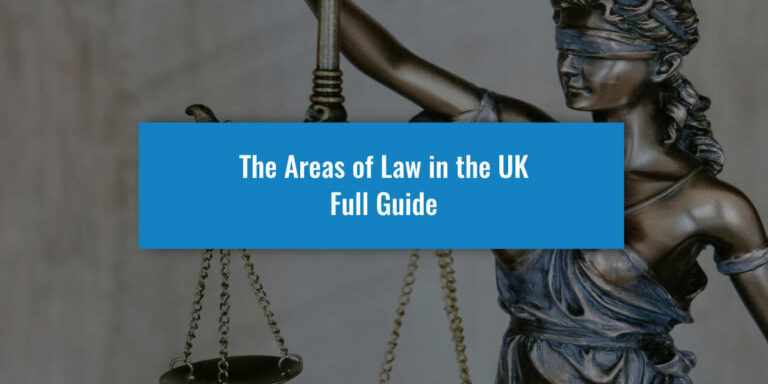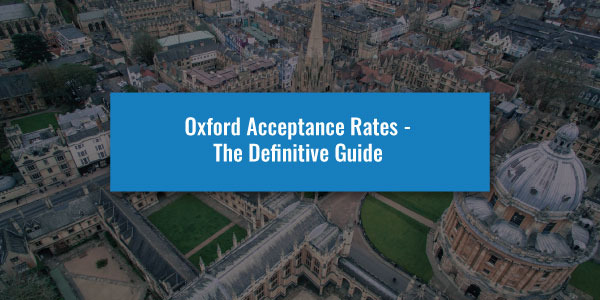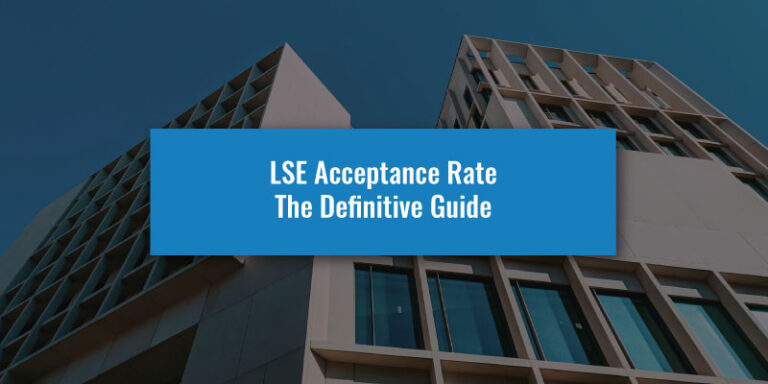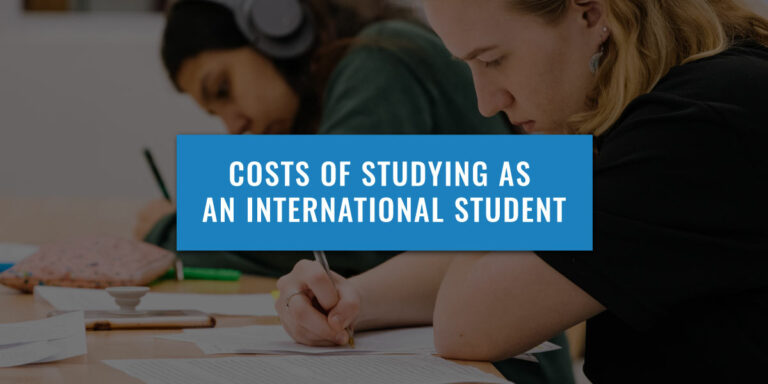The University of Cambridge is one of the most selective universities in the world, with a huge pool of highly competitive applicants across the 30+ undergraduate courses on offer.
With so many applicants and such a limited number of spaces, offer rates and acceptance rates at Cambridge are very low, especially for the most popular subjects. However, knowing the admissions data for your course will give you more context into how difficult the admissions process will be.
In this guide, we’ll be taking a deep dive into Cambridge’s Admissions Statistics report to understand the acceptance rates of every undergraduate course currently available. Let’s get started!
Want to skip to the information about your subject? Select one of the buttons below:
University of Cambridge Acceptance Rates - overall
If you don’t already know, a university’s “acceptance rate” is the percentage of applicants who are admitted to study at said university in a given year. This is calculated as such:
Number of admitted applicants/Total number of applicants
There are actually two key statistics that are important to consider though, as universities will have a different offer rate, which is the percentage of applicants who were offered a place. This figure is always higher than the acceptance rates, as not everyone who is given an offer will be admitted, either because they reject the offer or because they did not achieve the required grades in their exams.
When it comes to Oxbridge applications (Oxford & Cambridge), offer rates are usually more important to consider as receiving an offer to study at either university is extremely difficult. When an applicant has received their Oxbridge offer, it’s more than likely that they will accept it and will hopefully be admitted, hence why the offer rates and acceptance rates are usually so close.
First things first, let’s look at the overall acceptance rates for the University of Cambridge over the years. While there isn’t too much variance in rates, some years did have higher rates of acceptance than others for a variety of reasons (The year presented is the year of entry).
Cambridge Acceptance Rates (2020 - 2024)
2024
Applicants: 22,153
Offers: 4,760
Acceptances: 3,632
Offer Rate: 21.5%
Acceptance Rate: 16.4%
2023
Applicants: 21,445
Offers: 4,553
Acceptances: 3,557
Offer Rate: 21.2%
Acceptance Rate: 16.6%
2022
Applicants: 22,470
Offers: 4,238
Acceptances: 3,544
Offer Rate: 18.9%
Acceptance Rate: 15.8%
2021
Applicants: 22,795
Offers: 4,260
Acceptances: 3,660
Offer Rate: 18.7%
Acceptance Rate: 16.1%
2020
Applicants: 20,426
Offers: 4,710
Acceptances: 3,997
Offer Rate: 23.1%
Acceptance Rate: 19.6%
Prior to the COVID-19 Pandemic, offer rates at Cambridge were actually closer to 25%. However, this dropped slightly in 2020 before facing a sharper fall in 2021.
Since then, offer rates have been rising as the university has increased its offers and acceptances each year, reaching a new peak in 2024. The offer rate was unusually high in 2023 due to a reduction in applications, but this rate actually increased further in 2024 despite the university seeing over 1,000 more applicants. This indicates that it may be getting easier to get an offer at Cambridge, although acceptance rates have remained consistent since 2021.
This goes to show that Cambridge has become harder to get into, and the trend has continued downward since 2020.
What Are Oxford's Acceptance Rates?
Compared to Cambridge, the University of Oxford tends to have slightly lower offer and acceptance rates, meaning it’s generally harder to get a place at Oxford. Here are the statistics for the 2024 Entry admissions cycle:
2024
Applicants: 23,061
Offers: 3,793
Acceptances: 3,245
Offer Rate: 16.4%
Acceptance Rate: 14.1%
There’s a smaller gap between the offer and acceptance rates, but Oxford generally sends out 600 – 800 fewer offers and 300 fewer acceptances each year. You can learn more about these statistics in our Oxford Acceptance Rates Guide. If you’re applying to Imperial as well as Cambridge, you can learn about its acceptance rates here.
These statistics are for the overall admissions for Cambridge, so they aren’t necessarily representative of how likely you will be to get into your chosen course. Acceptance rates can vary greatly between courses, with some examples skewing the average. Next, let’s review the top 5 subjects at Cambridge in terms of the number of applicants.
Less than 22% of Cambridge applicants were offered a place, but 59% of UniAdmissions students got their Oxbridge offer.
If you want the best chance of getting into Cambridge, enrol on a Full-Blue Programme to receive world-class application support from start to finish. Our students have access to expert resources, one-to-one tuition sessions, intensive courses and much more, all designed to give them the best possible chance of success.
Discover our Full-Blue Programme by clicking the button below to learn how you can enrol and triple your chances of success.
Cambridge Admissions Statistics - Top Five Subjects
There are the five most popular courses taught by Cambridge based on the number of applicants (based on 2024 Entry admissions). We’ll also compare the figures from the previous year to see how things have changed. Are they impossible to get into? Let’s find out:
Cambridge Engineering Acceptance Rate
After coming in second in 2023, Engineering now stands as Cambridge’s most popular degree in 2024. But how hard is it to get a place on this prestigious course?
2024
Applicants: 2,654
Offers: 371
Acceptances: 321
Offer Rate: 14.0%
Acceptance Rate: 12.1%
2023
Applicants: 2,410
Offers: 370
Acceptances: 333
Offer Rate: 15.4%
Acceptance Rate: 13.8%
The course saw an additional 250 applicants in 2024, but only one additional offer was made, with 12 fewer spots eventually being filled. Naturally, this had an impact on the success rates, with both offers and acceptances dropping by over 1% in 2024.
This has actually led Engineering to become one of the most competitive courses at Cambridge in 2024, with the offer rate being amongst the lowest in the university.
Cambridge Natural Sciences Acceptance Rate
Natural Sciences is one of Cambridge’s premiere courses, considered one of the best science courses in the world. This is reflected in the applicant numbers, commonly being the most applied for the course each year (although it was overtaken by Engineering in 2024).
2024
Applicants: 2,529
Offers: 650
Acceptances: 569
Offer Rate: 25.7%
Acceptance Rate: 22.5%
2023
Applicants: 2,444
Offers: 626
Acceptances: 547
Offer Rate: 25.6%
Acceptance Rate: 22.4%
As we can see, Natural Sciences actually has a fairly high offer and acceptance rate, both falling above 20%. The course has grown to match its demand fairly well, with the rates of success remaining almost identical between 2023 and 2024. With over 600 offers made and over 540 applicants admitted in both years, this data proves that the most popular courses aren’t always the most competitive.
Cambridge Computer Science Acceptance Rate
Next, we have Computer Science, which has seen great demand from students over the last two decades. With this demand, combined with the advanced abilities required, the subject can sometimes be very hard to get into. How does Cambridge’s course fare?
2024
Applicants: 1,863
Offers: 168
Acceptances: 141
Offer Rate: 9.0%
Acceptance Rate: 7.6%
2023
Applicants: 1,583
Offers: 147
Acceptances: 121
Offer Rate: 9.3%
Acceptance Rate: 7.6%
As we can see, Computer Science isn’t just the most competitive of the top five Cambridge degrees, but is the most competitive undergraduate course taught at Cambridge in terms of offers. (as well as having the second lowest acceptance rate).
Despite having over 1,000 fewer applicants than Natural Sciences, less than 10% of these applicants received an offer. Computer Science is one of only two course to have an offer rate below 10%, though this is still significantly higher than the offer rate for Oxford’s equivalent course.
Cambridge Mathematics Acceptance Rate
In 2023, Mathematics saw an increase in applications that has now put it in the top five subjects applied for at Cambridge. This has only increased further in 2024, but have the offer and acceptance rates gone up with the increased applications?
2024
Applicants: 1,840
Offers: 537
Acceptances: 260
Offer Rate: 29.2%
Acceptance Rate: 14.1%
2023
Applicants: 1,588
Offers: 524
Acceptances: 258
Offer Rate: 33.0%
Acceptance Rate: 16.2%
Mathematics had by far the highest offer rate of the top five courses in 2024; nearly 5% more than Natural Sciences. However, despite receiving roughly 250 more applications in 2024, only 13 extra offers were sent, with just two additional students being admitted. This led to a nearly 4% drop in the offer rate.
As well as this, just under 50% of those offer holders were actually admitted, making for a more standard acceptance rate for the course. This is down to Cambridge’s entry requirements for Mathematics, which require applicants to sit the Sixth Term Examination Paper after earning their offer. Those who do not meet the threshold score have their offers revoked, so many offer-holders unfortunately do not get their place.
Cambridge Medicine Acceptance Rate
Medicine is one of the most popular degrees in the UK, but is only Cambridge’s fifth most popular course on offer (it was third in 2023). Medicine is infamously competitive due to the high standards of UK medical schools, but is Cambridge even more difficult to get into?
2024
Applicants: 1,791
Offers: 288
Acceptances: 271
Offer Rate: 16.1%
Acceptance Rate: 15.1%
2023
Applicants: 1,754
Offers: 288
Acceptances: 273
Offer Rate: 16.4%
Acceptance Rate: 15.6%
These acceptance rates are still fairly low, but Medicine isn’t the most competitive course Cambridge has to offer. Plus, most offer-holders confirm their place, with only 17 applications not being accepted in 2024. Interestingly, success rates for Cambridge Medicine are far higher than Oxford, which had an 8.7% acceptance rate in 2023.
As well as the standard Medicine degree, Cambridge also offers a graduate variant. However, the success rates for this course are even lower, despite the smaller applicant pool:
Applicants: 489
Offers: 45
Acceptances: 30
Offer Rate: 9.2%
Acceptance Rate: 6.1%
In 2024, Graduate Medicine actually had the lowest acceptance rate of any standard course at Cambridge, beating Computer Science by roughly 1.5%.
Were you surprised to see any of these subjects at the top? While these subjects have a lot of applicants to compete with, they clearly aren’t impossible to get a place on (although some are harder than others). However, are these the most competitive courses Cambridge has to offer? Let’s explore the rest of their selection to see if there are any subjects that are easier or harder to get into.
Access "The Big Book Of Oxbridge Applications" For FREE
Are you considering applying to Oxford or Cambridge? The Big Book of Oxbridge Applications is your must-have resource. Whether you’re exploring colleges, preparing for admissions tests, mastering your UCAS application, crafting a standout Personal Statement, or aiming for exam success, this free book will be invaluable to your preparation. You’ll find:
- Over 40 admissions test practice questions
- 28 example Oxbridge Personal Statements
- Interviews with Oxbridge students and graduates
- Additional downloadable resources
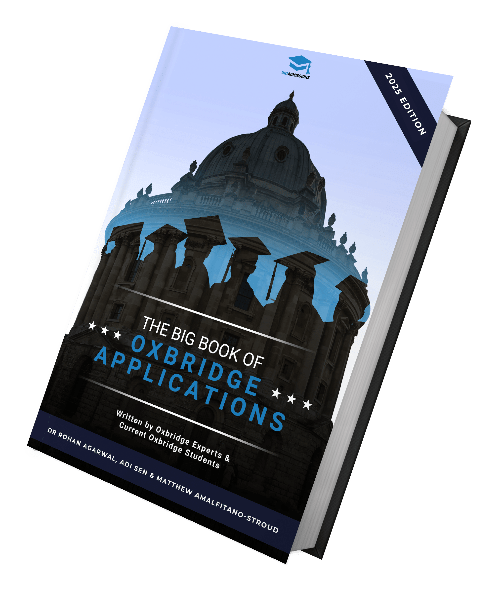
Access "The Oxbridge Application Vault"
- 300+ page ebook for Oxbridge Applicants
- 25 page ebook for Personal Statement
- 2h+ online course to succeed in any exam
- Online Oxbridge Success Calculator
- 12 page ebook about UniAdmissions
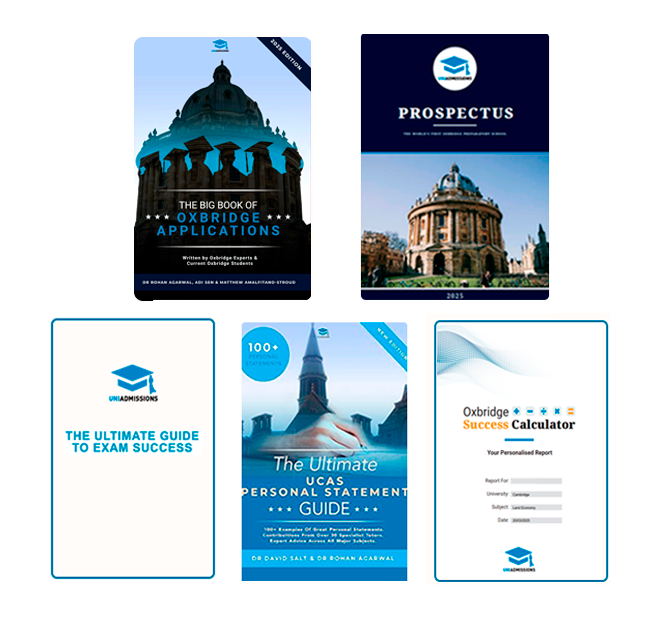
Cambridge Acceptances Rates - A-Z
There are over 25 more subjects to cover, so let’s go through them from A – Z.
Cambridge Anglo-Saxon, Norse & Celtic Acceptance Rate
2024
Applicants: 65
Offers: 42
Acceptances: 27
Offer Rate: 64.6%
Acceptance Rate: 41.5%
2023
Applicants: 62
Offers: 36
Acceptances: 19
Offer Rate: 58.1%
Acceptance Rate: 30.6%
Already, we have come across the course with the least applicants for both 2023 and 2024, with an extremely high offer rate to go with it! The course also had the largest gap between offer and acceptance rates in 2023, but this gap closed somewhat in 2024. Despite these high success rates, this isn’t the least competitive course at Cambridge!
Cambridge Archaeology Acceptance Rate
2024
Applicants: 79
Offers: 41
Acceptances: 22
Offer Rate: 51.9%
Acceptance Rate: 27.9%
2023
Applicants: 82
Offers: 46
Acceptances: 32
Offer Rate: 56.1%
Acceptance Rate: 39.0%
Despite the trend of increased applications and acceptances across many courses in 2024, Archaeology saw a drop of 10 admitted students for this year’s cohort. The course had the least number of accepted students in 2024, meaning it is the smallest cohort of the year.
Cambridge Architecture Acceptance Rate
2024
Applicants: 526
Offers: 88
Acceptances: 64
Offer Rate: 16.7%
Acceptance Rate: 12.2%
2023
Applicants: 522
Offers: 96
Acceptances: 60
Offer Rate: 18.4%
Acceptance Rate: 11.5%
Cambridge Asian & Middle Eastern Studies Acceptance Rate
2024
Applicants: 111
Offers: 61
Acceptances: 38
Offer Rate: 55.0%
Acceptance Rate: 34.2%
2023
Applicants: 124
Offers: 51
Acceptances: 40
Offer Rate: 41.1%
Acceptance Rate: 32.2%
Cambridge Chemical Engineering & Biotechnology Acceptance Rate
2024
Applicants: 421
Offers: 76
Acceptances: 66
Offer Rate: 18.1%
Acceptance Rate: 15.7%
2023
Applicants: 373
Offers: 88
Acceptances: 67
Offer Rate: 23.6%
Acceptance Rate: 18.0%
Cambridge Classics Acceptance Rate
2024
Applicants: 115
Offers: 67
Acceptances: 53
Offer Rate: 58.3%
Acceptance Rate: 46.1%
2023
Applicants: 126
Offers: 59
Acceptances: 50
Offer Rate: 46.8%
Acceptance Rate: 39.7%
Cambridge Classics (4 Years) Acceptance Rate
2024
Applicants: 79
Offers: 54
Acceptances: 34
Offer Rate: 68.4%
Acceptance Rate: 43.0%
2023
Applicants: 106
Offers: 49
Acceptances: 29
Offer Rate: 46.2%
Acceptance Rate: 27.4%
Cambridge Design Acceptance Rate
2024
Applicants: 110
Offers: 35
Acceptances: 23
Offer Rate: 31.8%
Acceptance Rate: 20.9%
Design was first introduced at Cambridge in 2024 and saw just 110 applicants for its first cohort. With just 23 admitted students, this course had the second smallest cohort of 2024. Only time will tell if this degree becomes more popular at Cambridge as more cohorts work through it.
Cambridge Economics Acceptance Rate
2024
Applicants: 1,571
Offers: 197
Acceptances: 161
Offer Rate: 12.5%
Acceptance Rate: 10.3%
2023
Applicants: 1,336
Offers: 183
Acceptances: 162
Offer Rate: 13.7%
Acceptance Rate: 12.1%
Although Economics is a very popular choice amongst UK applicants, the course at Cambridge isn’t quite as popular as some of the others on offer (it had the 7th most applications in 2024). Oxford’s Economics & Management received far more applications but had a far lower acceptance rate.
Cambridge Education Acceptance Rate
2024
Applicants: 164
Offers: 54
Acceptances: 37
Offer Rate: 32.9%
Acceptance Rate: 22.6%
2023
Applicants: 190
Offers: 49
Acceptances: 34
Offer Rate: 26.3%
Acceptance Rate: 17.9%
Cambridge English Acceptance Rate
2024
Applicants: 719
Offers: 230
Acceptances: 182
Offer Rate: 32.9%
Acceptance Rate: 22.6%
2023
Applicants: 756
Offers: 222
Acceptances: 187
Offer Rate: 29.4%
Acceptance Rate: 24.7%
Despite being one of the core subjects in UK schools, English hasn’t found the same popularity amongst Oxbridge applicants compared to Science or Mathematics, although Oxford’s English course did receive over 950 applicants in 2023.
Cambridge Foundation Acceptance Rate
2024
Applicants: 350
Offers: 53
Acceptances: 48
Offer Rate: 15.1%
Acceptance Rate: 13.7%
2023
Applicants: 268
Offers: 52
Acceptances: 42
Offer Rate: 19.4%
Acceptance Rate: 15.7%
Cambridge offers a single-year Foundation degree in Art, Humanities and Social Sciences. This course is designed as a stepping stone for those wishing to study at Cambridge, but it generally doesn’t see a large number of applicants. Despite the course seeing over 80 additional applications in 2024, only one additional offer was made, leading to a significant drop in the offer rate.
Cambridge Geography Acceptance Rate
2024
Applicants: 437
Offers: 140
Acceptances: 101
Offer Rate: 32.0%
Acceptance Rate: 23.1%
2023
Applicants: 524
Offers: 138
Acceptances: 99
Offer Rate: 26.3%
Acceptance Rate: 18.9%
Cambridge History Acceptance Rate
2024
Applicants: 599
Offers: 222
Acceptances: 174
0Offer Rate: 37.1%
Acceptance Rate: 29.0%
2023
Applicants: 607
Offers: 213
Acceptances: 164
Offer Rate: 35.1%
Acceptance Rate: 27.0%
Cambridge History & Modern Languages Acceptance Rate
2024
Applicants: 94
Offers: 44
Acceptances: 31
Offer Rate: 46.8%
Acceptance Rate: 33.0%
2023
Applicants: 88
Offers: 37
Acceptances: 31
Offer Rate: 42.0%
Acceptance Rate: 35.2%
Cambridge History & Politics Acceptance Rate
2024
Applicants: 260
Offers: 71
Acceptances: 57
Offer Rate: 27.3%
Acceptance Rate: 21.9%
2023
Applicants: 342
Offers: 71
Acceptances: 67
Offer Rate: 20.8%
Acceptance Rate: 19.6%
History & Politics is the most competitive variant of History at Cambridge by a fair margin, despite having fewer applicants than standard History. However, 2024 saw a sizeable decrease in applications, which led to an increased offer rate.
Cambridge History of Art Acceptance Rate
2024
Applicants: 103
Offers: 47
Acceptances: 35
Offer Rate: 45.6%
Acceptance Rate: 34.0%
2023
Applicants: 87
Offers: 37
Acceptances: 31
Offer Rate: 42.0%
Acceptance Rate: 35.2%
Cambridge HSPS Acceptance Rate
2024
Applicants: 1,259
Offers: 228
Acceptances: 174
Offer Rate: 18.1%
Acceptance Rate: 13.8%
2023
Applicants: 1,436
Offers: 219
Acceptances: 166
Offer Rate: 15.3%
Acceptance Rate: 11.6%
HSPS stands for Human, Social & Political Sciences, and is one of the most popular Humanities courses at Cambridge, only behind Law. Some consider it the Cambridge equivalent of Oxford’s PPE.
Cambridge Land Economy Acceptance Rate
2024
Applicants: 614
Offers: 111
Acceptances: 71
Offer Rate: 18.1%
Acceptance Rate: 11.6%
2023
Applicants: 629
Offers: 92
Acceptances: 71
Offer Rate: 14.6%
Acceptance Rate: 11.3%
Cambridge Law Acceptance Rate
2024
Applicants: 1,604
Offers: 288
Acceptances: 236
Offer Rate: 18.0%
Acceptance Rate: 14.7%
2023
Applicants: 1,580
Offers: 280
Acceptances: 230
Offer Rate: 17.7%
Acceptance Rate: 14.6%
Cambridge Linguistics Acceptance Rate
2024
Applicants: 120
Offers: 55
Acceptances: 43
Offer Rate: 45.8%
Acceptance Rate: 35.8%
2023
Applicants: 119
Offers: 44
Acceptances: 26
Offer Rate: 37.0%
Acceptance Rate: 21.8%
Cambridge Modern & Medieval Languages Acceptance Rate
2024
Applicants: 218
Offers: 152
Acceptances: 117
Offer Rate: 69.7%
Acceptance Rate: 53.7%
2023
Applicants: 254
Offers: 155
Acceptances: 128
Offer Rate: 61.0%
Acceptance Rate: 50.4%
For the second year in a row, MML saw the highest offer and acceptance rates of any course at Cambridge. This was partly due to the sharp decrease in applicants compared to 2022 (336), which was maintained in 2024. Despite the reduction in offers this year, the offer and acceptance rates each increased by a significant amount in 2024.
Cambridge Music Acceptance Rate
2024
Applicants: 130
Offers: 82
Acceptances: 64
Offer Rate: 63.1%
Acceptance Rate: 49.2%
2023
Applicants: 140
Offers: 78
Acceptances: 51
Offer Rate: 55.7%
Acceptance Rate: 36.4%
Cambridge PBS Acceptance Rate
2024
Applicants: 837
Offers: 108
Acceptances: 72
Offer Rate: 12.9%
Acceptance Rate: 8.6%
2023
Applicants: 891
Offers: 104
Acceptances: 81
Offer Rate: 11.7%
Acceptance Rate: 9.1%
PBS stands for Psychological and Behavioural Sciences, and is on the higher end of competitiveness at Cambridge, with fewer than 80 acceptances across over 800 applicants.
Cambridge Philosophy Acceptance Rate
2024
Applicants: 288
Offers: 66
Acceptances: 50
Offer Rate: 22.9%
Acceptance Rate: 17.4%
2023
Applicants: 306
Offers: 69
Acceptances: 50
Offer Rate: 22.5%
Acceptance Rate: 16.3%
Cambridge Theology, Religion & Philosophy of Religion Acceptance Rate
2024
Applicants: 128
Offers: 61
Acceptances: 41
Offer Rate: 47.7%
Acceptance Rate: 32.0%
2023
Applicants: 105
Offers: 46
Acceptances: 37
Offer Rate: 43.8%
Acceptance Rate: 35.2%
Cambridge Veterinary Medicine Acceptance Rate
2024
Applicants: 336
Offers: 81
Acceptances: 67
Offer Rate: 24.1%
Acceptance Rate: 19.9%
2023
Applicants: 333
Offers: 90
Acceptances: 73
Offer Rate: 27.0%
Acceptance Rate: 21.9%
This is also the last course on our list. If you’re interested in learning about the success rates for each college at Cambridge, discover our Cambridge College Acceptance Rates Guide here. For now, though, let’s look at some of the key points in the data above.
Triple your chances of Cambridge success with UniAdmissions
In 2024, we got 59% of our students into Oxford or Cambridge, more than three times higher than the national average. We achieved that by offering the best support for our students; support that you can access too when you enrol for one of our Full-Blue Programmes.
Discover our Full-Blue Programme by clicking the button below to learn how you can enrol and triple your chances of success.
Cambridge Admissions Statistics - What Can We Learn?
We’ve covered a lot of information here, and there’s much more to be found on the official Cambridge Admissions Report which can be found online. If you want to take an even deeper dive into the 2024 admissions cycle, be sure to check it out.
For now, though, let’s look at Cambridge’s Application Statistics to answer some of the most pressing questions applicants tend to have.
Cambridge's Most Competitive & Least Competitive Courses
Applicants are always keen to learn which courses are the easiest and hardest to get into. While no course at Cambridge is actually easy to get into – you still need to put in a lot of work to meet the required standards – we’ll assume that courses with higher offer and acceptance rates are easier to get into. So let’s look at the top 5 courses for each:
Hardest Cambridge Courses To Get Into
Firstly, let’s look at the courses with lowest offer and acceptance rates:
Lowest Offer Rates At Cambridge 2024
| Course | Applicants | Offers | Offer Rate |
|---|---|---|---|
| Computer Science | 1,863 | 168 | 9.0% |
| Graduate Medicine | 489 | 45 | 9.2% |
| Economics | 1,571 | 197 | 12.5% |
| PBS | 837 | 108 | 12.9% |
| Engineering | 2,654 | 371 | 14.0% |
Lowest Acceptance Rates At Cambridge 2024
| Course | Applicants | Acceptances | Acceptance Rate |
|---|---|---|---|
| Grad Medicine | 489 | 30 | 6.1% |
| Computer Science | 1,863 | 141 | 7.6% |
| PBS | 837 | 72 | 8.6% |
| Economics | 1,571 | 161 | 10.3% |
| Land Economy | 614 | 71 | 11.6% |
With this data, we can confirm that Graduate Medicine was the most difficult course to get into in 2024, although Computer Science had a slightly lower offer rate. As we can see, the most competitive courses at Cambridge remain fairly consistent between offer rates and acceptance rates, with only Engineering and Land Economy being swapped out between the lists.
One thing to note is that only one the top 5 most popular degrees at Cambridge features here, meaning the others are less competitive despite having so many more applicants. This goes to show that you shouldn’t be put off by the number of applicants that apply each year; it’s all about how many offers are actually given out.
Easiest Cambridge Courses To Get Into
On the opposite end, let’s look at the courses with the highest offer and acceptance rates:
Highest Offer Rates At Cambridge 2024
| Course | Applicants | Offers | Offer Rate |
|---|---|---|---|
| Modern & Medieval Languages | 218 | 152 | 69.7% |
| Classics (4 Year) | 79 | 54 | 68.4% |
| Anglo-Saxon, Norse & Celtic | 65 | 42 | 64.6% |
| Music | 130 | 82 | 63.1% |
| Classics | 115 | 67 | 58.3% |
Highest Acceptance Rates At Cambridge 2024
| Course | Applicants | Acceptances | Acceptance Rate |
|---|---|---|---|
| Modern & Medieval Languages | 218 | 117 | 53.7% |
| Music | 130 | 64 | 49.2% |
| Classics | 115 | 53 | 46.1% |
| Classics (4 Year) | 79 | 34 | 43.0% |
| Anglo-Saxon, Norse & Celtic | 65 | 27 | 41.5% |
As expected, most of the courses with high acceptance rates are more niche subjects with lower applications and acceptances – only Modern & Medieval Languages had over 100 offers and acceptances. MML was also the least competitive course of 2023, but its offer rate increased by over 7% since then. In general, the top five courses have become less competitive in general, with only one course having an offer rate of over 60% in 2023.
This information is incredibly useful for those planning on applying to any of these subjects, but let’s look at a few more general data points to see what we can learn about how Cambridge tackles their admissions process.
Cambridge Admissions Statistics: STEM vs Humanities
We’ve already seen that Cambridge offers far more Humanities, Arts & Social Sciences courses compared to STEM (referred to as ‘Sciences’ by Cambridge) courses. This should mean that applications and acceptances for Humanities applicants greatly outnumber those of STEM, but the data provided by Cambridge says otherwise:
Cambridge Humanities Application Statistics 2024
Applicants: 9,393
% of Total Applicants: 42.4%
Offers: 2,436
% of Total Offers: 51.2%
Acceptances: 1,835
% of Total Acceptances: 50.5%
Acceptance Rate: 19.5%
Cambridge STEM Application Statistics 2024
Applicants: 12,760
% of Total Applicants: 57.6%
Offers: 2,324
% of Total Offers: 48.8%
Acceptances: 1,797
% of Total Acceptances: 49.5%
Acceptance Rate: 14.1%
Despite being only 26% of the undergraduate courses available at Cambridge (8/31), STEM degrees accounted for 58% of applicants and nearly 50% of offers in 2024. This is evidence of just how in-demand Cambridge’s selection of science-based courses is.
Despite this, the acceptance rate for STEM courses is significantly lower, showing that admissions to these courses are also more demanding and competitive. There is also a fairly large divide between male and female students in STEM courses at both Cambridge and Oxford. You can learn more about this in our guide to the Oxbridge Gender Gap.
Cambridge Admissions Statistics: State Vs Private School
One of the biggest issues surrounding Oxbridge admissions is the success rates between State/Maintained Schools and Private/Independent Schools, as well as the proportionality compared to student numbers in the UK. Cambridge has been working on increasing state school admissions over the years, although they have recently decided to remove their state school admissions targets. However, it’s now common to see a greater percentage of state school applicants being admitted over private school.
Cambridge State School Application Statistics 2024
Applicants: 10,074
% of Total Applicants: 69.4%
Offers: 2,524
% of Total Offers: 70.5%
Acceptances: 1,897
% of Total Acceptances: 68.2%
Acceptance Rate: 18.8%
Cambridge Private School Application Statistics 2024
Applicants: 3,593
% of Total Applicants: 24.8%
Offers: 901
% of Total Offers: 25.2%
Acceptances: 776
% of Total Acceptances: 27.9%
Acceptance Rate: 21.6%
This data only covers home applicants and excludes 6% of applicants classed under “Other”, but we can see that State schools outnumber private schools in every metric. When looking at just UK applicants, those from state schools made up 68% of acceptances compared to 28% for private schools.
The divide between the two types of schools is somewhat smaller when it comes to acceptance rates, with Private school students only being nearly 4% more frequently admitted.
It remains to be seen how Cambridge’s decision to remove its targets will affect 2025 admissions rates, but for now, we can definitely dispel the myth that “No one at Oxbridge is from State Schools”.
Cambridge Application Statistics: International Applications
Cambridge International Application Statistics 2024
Applicants: 7,638
% of Total Applicants: 34.5%
Offers: 1,180
% of Total Offers: 24.8%
Acceptances: 851
% of Total Acceptances: 23.4%
Acceptance Rate: 11.1%
Despite the financial incentive for universities to admit more international applications, overseas applicants have generally had a much harder time being admitted to Oxford or Cambridge in recent years. There are a number of factors that can be attributed to this, but it seems that both universities generally have a preference to admit those living in the UK.
Cambridge has presented the data for the top 25 countries for applications, so let’s look at the five best and five worst-performing countries from 2024.
Best Performing Countries for Cambridge Admissions 2024
| Country | Applications | % of International Applications | Offers | % of International Offers | Acceptances | % of International Acceptances | Acceptance Rate |
|---|---|---|---|---|---|---|---|
| Japan | 59 | 0.8% | 20 | 1.7% | 16 | 1.9% | 27.1% |
| Singapore | 577 | 7.9% | 176 | 14.9% | 153 | 18.0% | 26.5% |
| Hong Kong | 557 | 7.3% | 113 | 6.6% | 98 | 11.5% | 17.6% |
| Poland | 95 | 1.2% | 23 | 1.9% | 15 | 1.9% | 15.8% |
| South Korea | 110 | 1.4% | 18 | 1.5% | 16 | 1.9% | 14.5% |
Worst Performing Countries for Cambridge Admissions 2024
| Country | Applications | % of International Applications | Offers | % of International Offers | Acceptances | % of International Acceptances | Acceptance Rate |
|---|---|---|---|---|---|---|---|
| France | 146 | 1.9% | 4 | 0.3% | 2 | 0.2% | 1.4% |
| Netherlands | 56 | 0.7% | 5 | 0.4% | 1 | 0.1% | 1.8% |
| Spain | 139 | 1.8% | 10 | 0.8% | 5 | 0.6% | 3.6% |
| Pakistan | 91 | 1.2% | 9 | 0.8% | 4 | 0.5% | 4.4% |
| United Arab Emirates | 131 | 1.7% | 10 | 0.8% | 7 | 0.8% | 5.3% |
These rankings are based on the acceptance rate, so we can see that there’s a fairly big variance between the best and worst-performing countries.
Starting with the best, we can see that 2024 was a fairly strong year for international applicants in certain countries. Two countries achieved an acceptance rate of over 20%, with both Japan and Singapore achieving the best international success rates in over three years. Although there’s a big gap between second and third place, the remaining three countries still have acceptance rates far above average.
Looking at the bottom of the list, these results may be surprising, as a lot of the entries here are significant European countries. France’s success rate fell even lower than in 2023 to become to the worst performing country of the year. Meanwhile, both Spain and the Netherlands fell into the bottom five. Previously, the USA was commonly one of the worst-performing countries, but was able to achieve a success rate of 6.7% this year.
The last thing to note is that China had the highest number of applicants, offers and acceptances among all international applicants. China had almost 4 times more applicants compared to Singapore, with over 2,300 applicants in 2024. However, despite receiving 252 acceptances, China’s acceptance rate landed at a fairly average 10.9%.
We’ve explored the best colleges for international applicants in our Oxbridge Colleges for International Applicants Guide, so be sure to check it out if you’re unsure of which one to apply to.
You should now have a better idea of what the success statistics look like for Cambridge applicants. This information will be useful in helping you decide what to apply for and understanding what kind of competition you’re up against. You may want to look at the acceptance rates for other Russell Group universities, as some of them are far less compeitive.
Of course, you should work hard on your application no matter how high the acceptance rates are for your course, as no one is guaranteed a place at Oxbridge, especially not without an Oxbridge-quality application. This data is best used to contextualise your application and help you understand that you need to be amongst the top 16% of applicants in the world to get your place.
If you’re looking for more information about Cambridge applications, be sure to explore our wide selection of guides, covering every step of the Cambridge admissions process. Alternatively, you could explore our Full-Blue Programmes to learn how you can enrol and receive the most comprehensive and effective Oxbridge application support available, boasting a 59% success rate. Either way, we wish you the best of luck with your Cambridge application!
Less than 22% of Cambridge applicants were offered a place, but 59% of UniAdmissions students got their Oxbridge offer.
If you want the best chance of getting into Cambridge, enrol on a Full-Blue Programme to receive world-class application support from start to finish. Our students have access to expert resources, one-to-one tuition sessions, intensive courses and much more, all designed to give them the best possible chance of success.
Discover our Full-Blue Programme by clicking the button below to learn how you can enrol and triple your chances of success.
